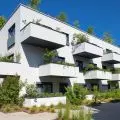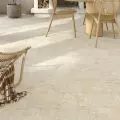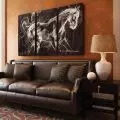Leisure architecture
In this section of A&B we discuss modern leisure spaces, interesting meeting places, bars, restaurants, cafes, surprising entertainment spaces that affect the senses, architecture related to travel, leisure and tourism buildings, marinas, picturesque guesthouses, hotels, relaxing interior architecture.
contemporary leisure architecture
Since industrialization, leisure spaces have become an indispensable part of the urban fabric. Factory workers felt their shortage acutely, and over time this gap was filled. Cities blossomed with bars, restaurants, bookstores and cafes. In recreational spaces, important psychosocial needs of residents are met and relationships are established. Just as we need spaces to live or work, they are essential for leisure time. Today, a city's wide, varied recreational offer not only determines the quality of life of its residents, but also its prestige. It can make it a popular tourist destination or squander this opportunity.
rest in the city
Despite the fact that we are a long way away from an industrial society, the trend toward shorter working hours is slowly beginning in European countries. This means that city dwellers are gradually gaining more and more free time, which they will allocate to hobbies, sports or just meeting friends at the local bar. Recreational facilities in the city not only serve the function of filling free time, but become an important part of the lives of its users. In addition to creating a setting for interpersonal contacts, as psychologists assure us, active recreation is also a panacea for all kinds of diseases of civilization, sensory overload, or stress.
interesting meeting places
City life, where the streets have been taken over by cars, is moving to cafes. This is often one of the main places for rest and relaxation, being closely related to the way of being. In the urban jungle, such oases of social life become important not only as a place for rest and entertainment, but as a space with which we will identify. New trends in gastronomic architecture are creating unique interiors, like the partially submerged restaurant Under, designed by architects from Snøhetta studio. Restaurants long ago stopped merely serving food. What matters is the surroundings, the meticulously designed atmosphere, the promoted way of being (bike cafes). In the age of social media, it's also a valuable "check-in".
how to design an attractive recreational space
Leaving the hustle and bustle of the city, outside the confines of urban development, it is worth moving to a place that will soothe strained nerves and overstressed senses. With help come various types of hotels, marinas, guesthouses or wellness centers. The luxury spa in Vals, Switzerland, designed by the 2009 Pritzker Prize winner, is a prime example of how architecture can influence the senses. A kind of mysticism of the space takes you to another dimension and complements the aesthetic effect of the thermal baths.
Pracownia JEMS Architekci została założona w 1988 roku, jednakże zespół architektoniczny będący zalążkiem biura działa nieprzerwanie od początku lat 80-tych. Rozpoczynając samodzielną praktykę w okresie transformacji ustrojowej JEMS włączył się w nurt odbudowy polskiej kultury architektonicznej. Obecnie trzon zespołu tworzy ośmiu wspólników i partnerów.
Partnerska współpraca realizowana w formule biura – warsztatu, przy współuczestnictwie całego zespołu JEMS, tworzy przestrzeń rozmów i poszukiwań, wymiany idei i poglądów. JEMS jest biurem otwartej dyskusji i debaty. To nasza wartość fundamentalna.
Rzeczywistość traktujemy zarówno jako materię tworzenia jak i ramy naszej działalności. Jej złożoność staramy się odczytywać przez filtr kultury, historii i tradycji, kontekstu miejsca. W wielowątkowości tego odczytu, a także w ograniczeniach i konfliktach jakie niesie ze sobą współczesność, poszukujemy źródeł inspiracji. Przemierzamy obszary, które często nie dają szans na sformułowanie szybkiej, jednoznacznej i syntetycznej odpowiedzi projektowej. Nie marzyliśmy nigdy o uniwersalnej metodzie – strategii. Odkrywane w wyniku studiów i obserwacji, obrazy, skojarzenia, odczucia, porządki i reguły odnajdujemy niejako „w drodze”, kierując się gromadzonymi przez lata doświadczeniami, intuicją. Na drodze tej pojawiają się zaskakujące, także nas samych, odkrycia. Nadają one sens naszym wysiłkom. W naszych pracach próbujemy odnaleźć to co jest dla poszczególnych tematów specyficzne. Zdefiniować temat, tak aby stał się kanwą poszukiwań architektonicznych. Architektura JEMS unika epatowania formą, szukamy tyleż istoty rzeczy, co samych rzeczy. Odwołujemy się do tego, co ponadhistoryczne: porządku, tektoniki, fascynacji naturalnymi możliwościami materiałów, światła, upływającego czasu, proporcji i reguł budowy formy. Najwięcej satysfakcji sprawiają nam projekty, które powstały jako spójne, całościowe wyobrażenia – zostały najpierw opowiedziane i przedyskutowane, opisane w kategorii sekwencji przestrzeni, struktur, poszukiwań unikalnej właściwej i przyjaznej dla odbiorcy atmosfery, stosowanych materiałów, faktur, świateł i nastrojów, a dopiero później narysowane i zbudowane.












